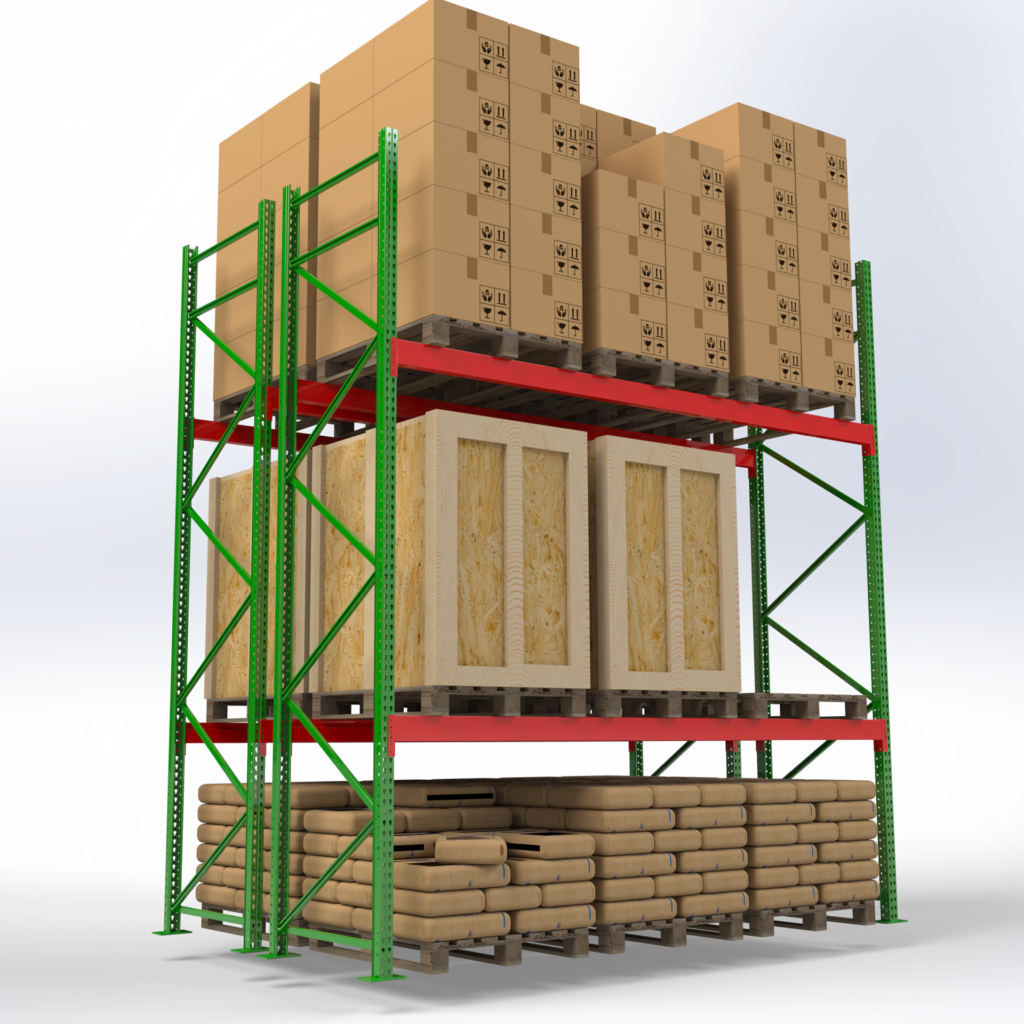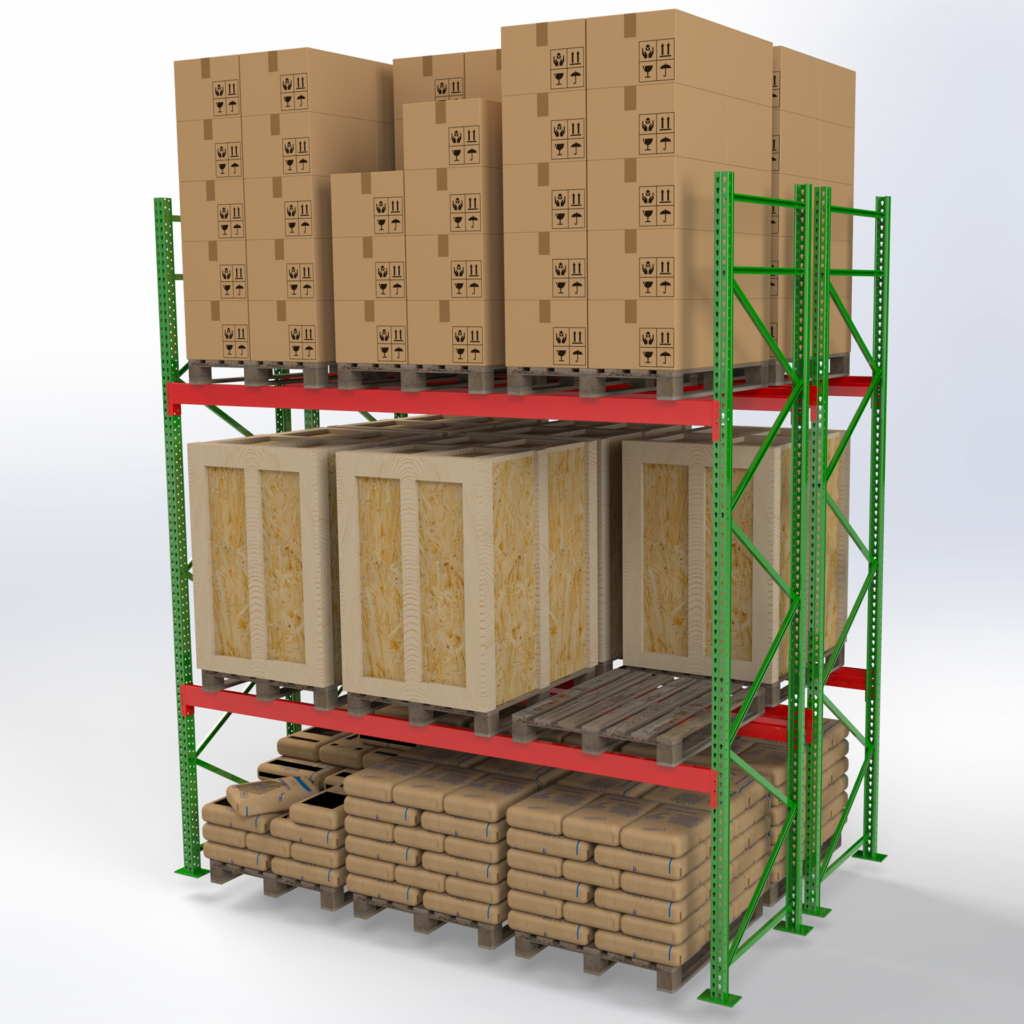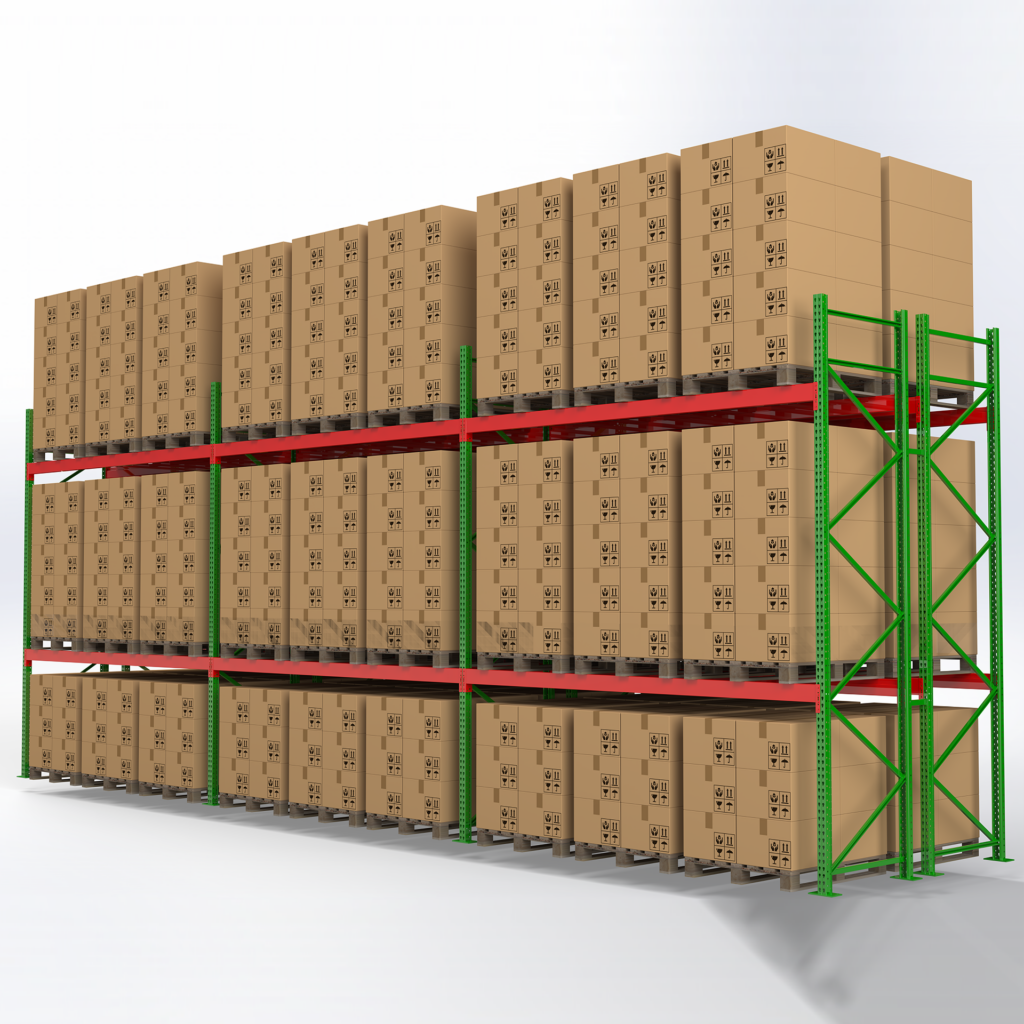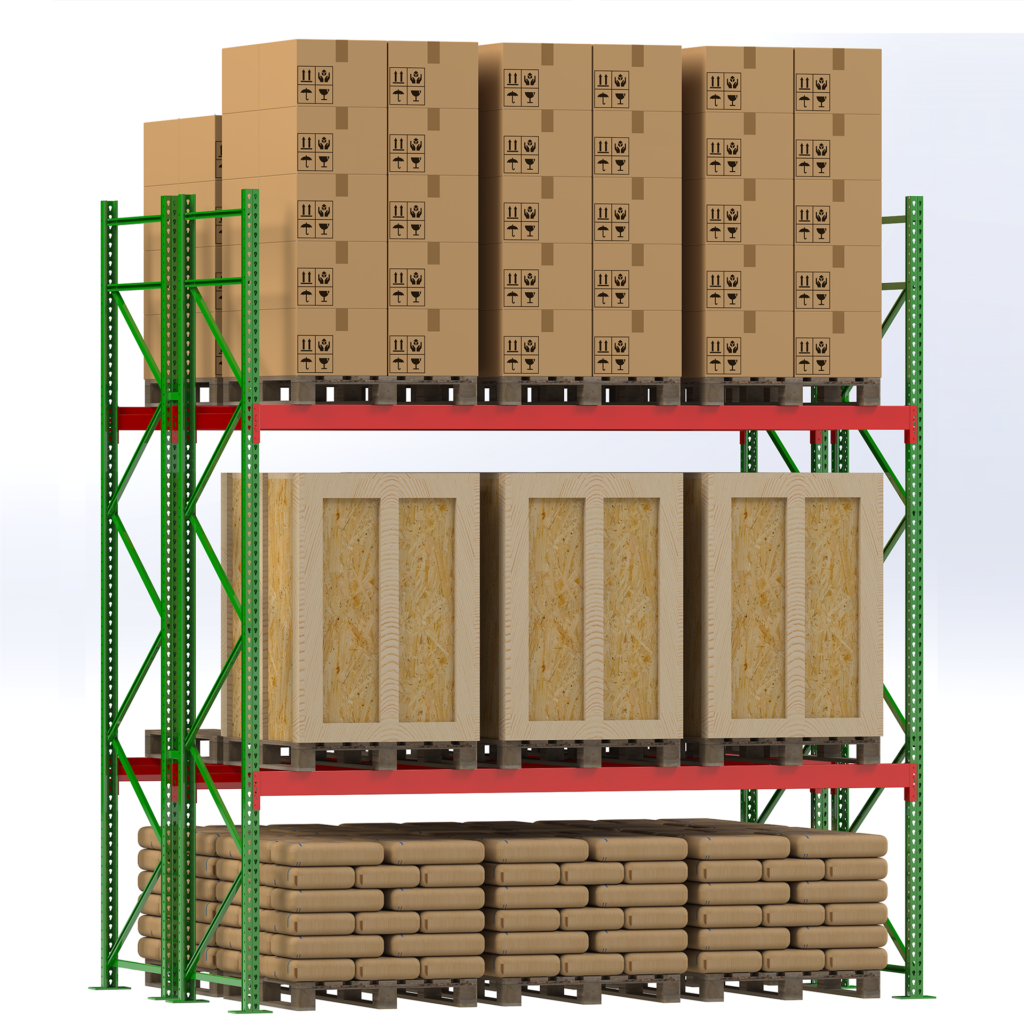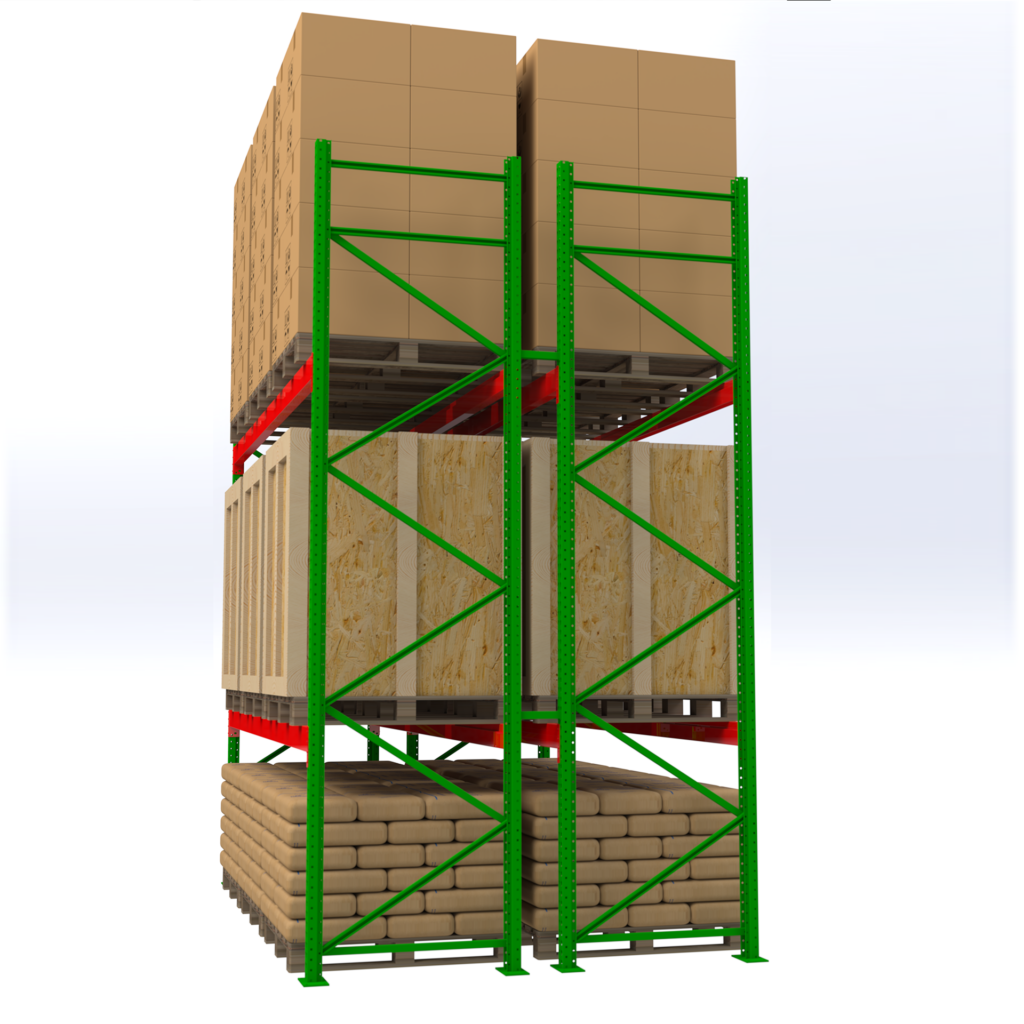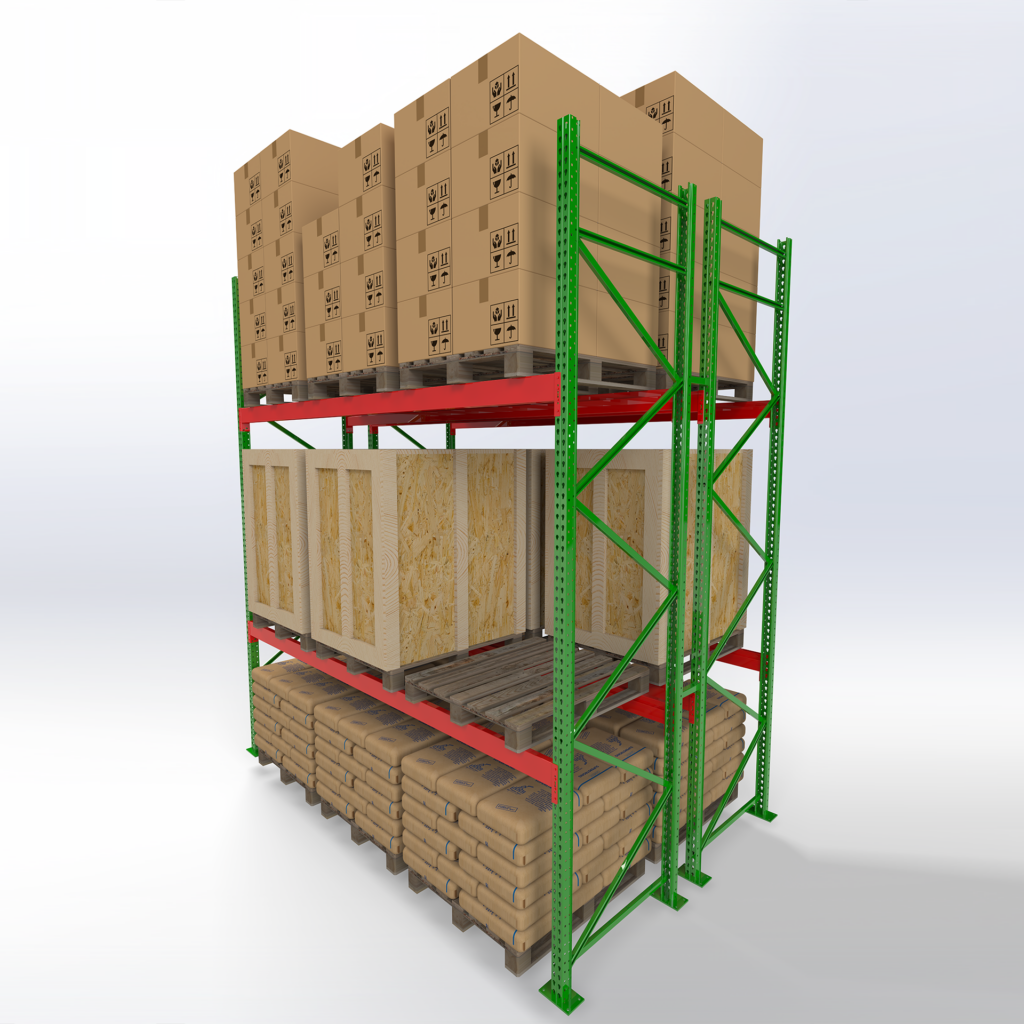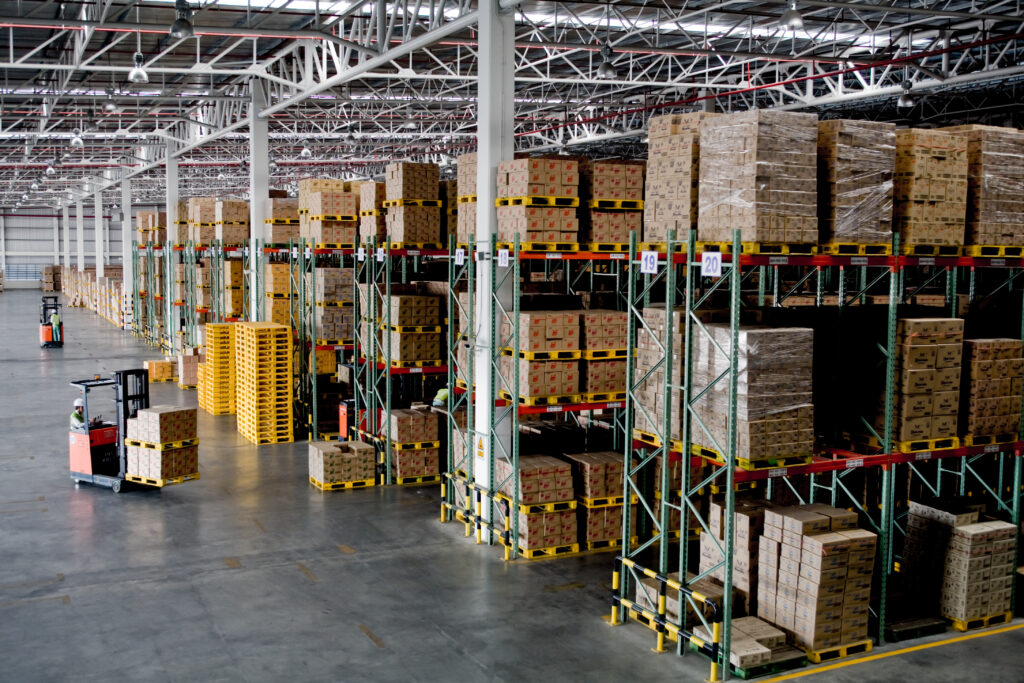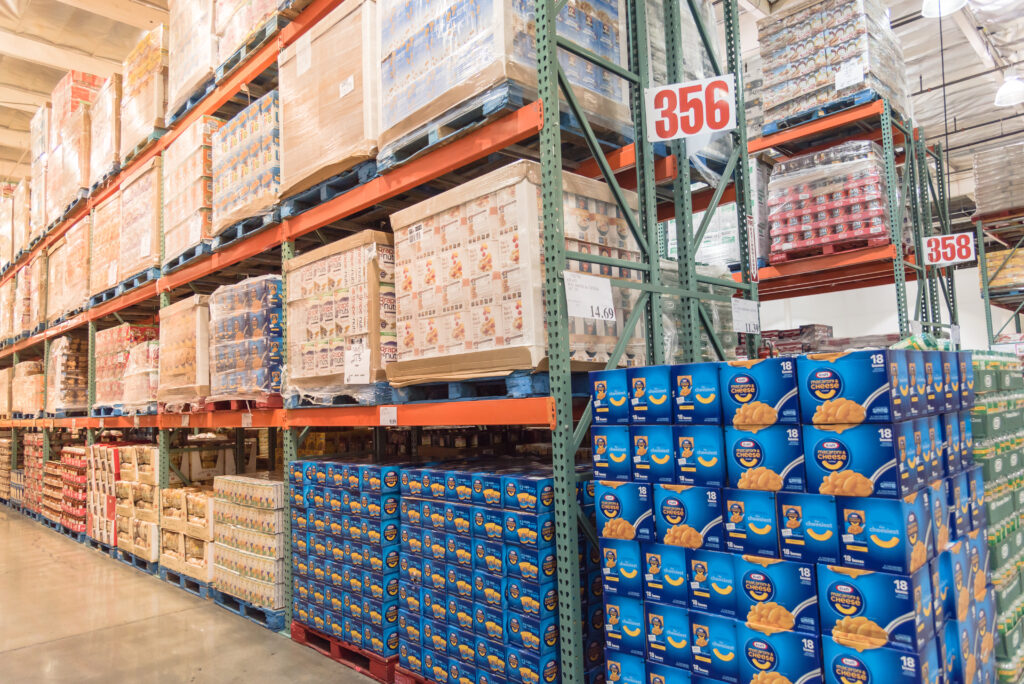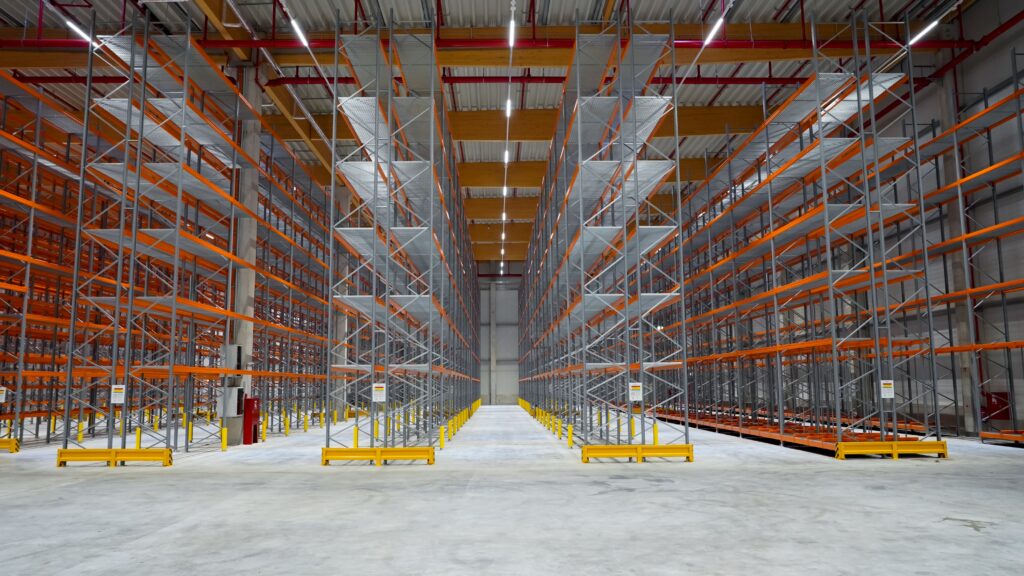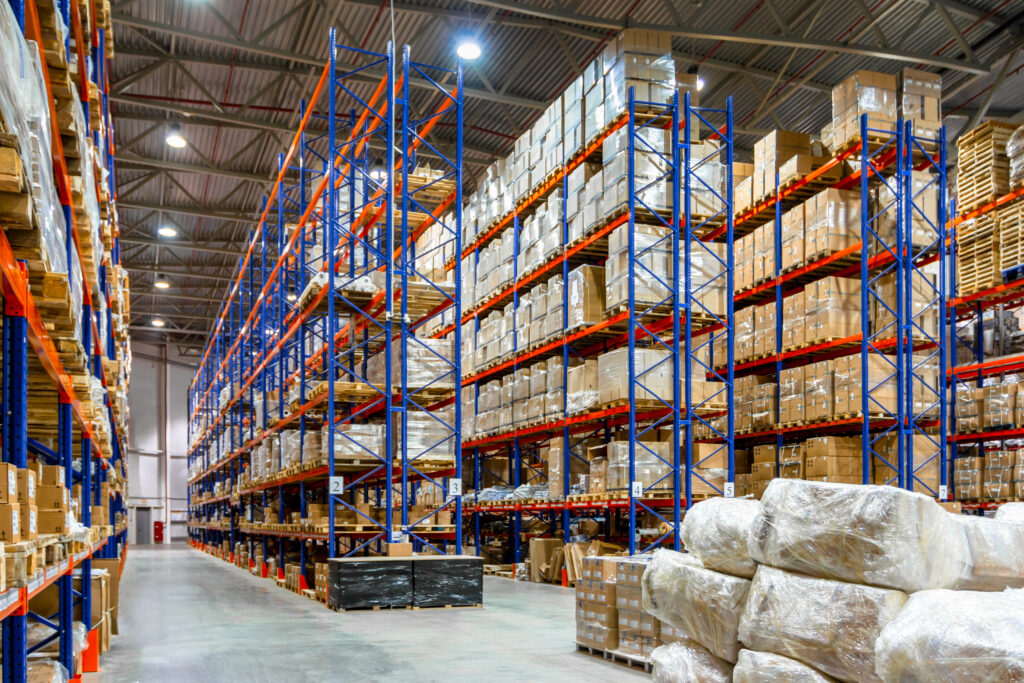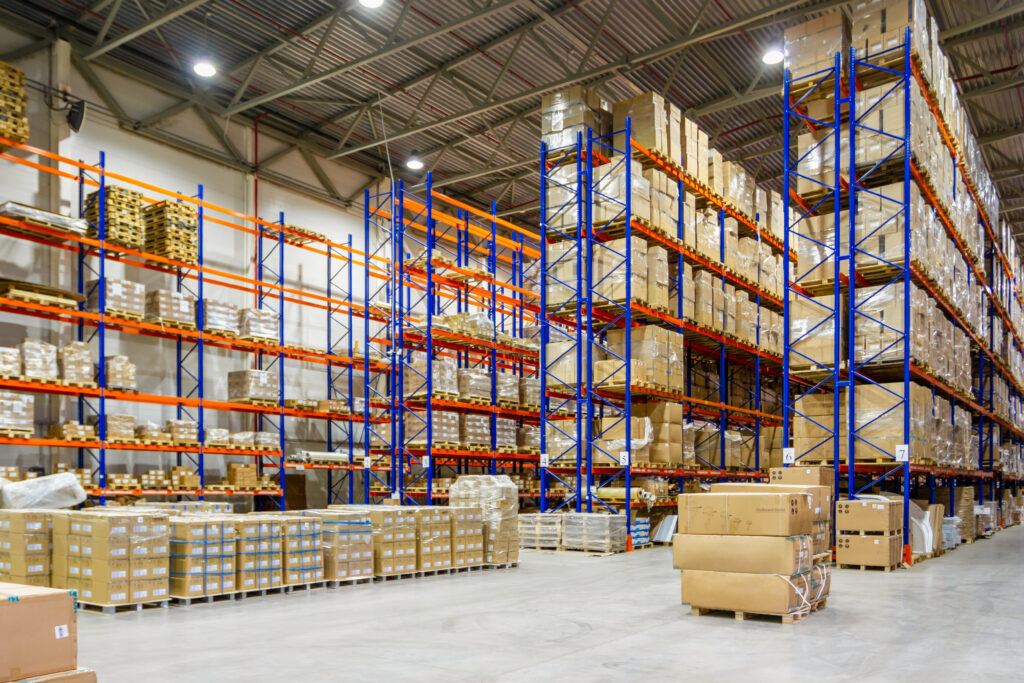Selective pallet racking systems meet all pallet standards worldwide and, of course, the most popular standard developed by the Grocery Manufacturers Association (GMA).
Selective pallet racks could be roll-formed steel or structural steel selective racks. The main components of a pallet rack are upright frames and horizontal beams. Decks are optional. They can be used on top of the beams, thus creating a shelf.
The roll-formed selective pallet racks include frames and beams. Frames are with kant-leg or step-back leg base options and are anchored to the base. This is an open-column design, available in 3”- and 4”-wide column sections. They can be designed to meet any applicable standards and codes. Additional accessories, including row spacers, wall ties, crossbars, and column guards, are available.
Step Beams are attached to the vertical frames. Manufactured with three- or four-pin end connectors, which allow for 2” vertical adjustability. They could be at various profile heights with bolted end connectors to attach to structural channel frames.
A structural steel selective rack is a durable choice for high-abuse, high-capacity warehouse operations.
Their channel beams are manufactured with a standard two-bolt, four-hole x 8” end connector, which allows for 2” vertical adjustability. Their frames are available in straight, steep ascent and caged units.
They do not require field welding.
The benefits are:
- Low cost, and less time for installation compared to other racking systems
- Access to any pallet at any time, as you can install selective pallet racks right up against each other. This option is called double-depth racks. Thanks to it, you can place several pallets back-to-back way
- Selective pallet racking systems maintain the different inventory systems: you can organize both FIFO, LIFO, and even mix them (one section will work by FIFO, another by LIFO)
- Storage utilization is approximately 45% and depends on your warehouse condition, including height, floor, and additional OSHA requirements for your business
- To better zoning, you can use the first level of selective racking as a picking area
- Also note that selective pallet racks can be combined with conveyors.
We can go on explaining and listing the benefits of these racks, as Lenokers has been working and installing/dismantling them all over the world for decades. We know every tiny detail about them. Ask us; we are sure we can fulfill your requirements.
